A Book I Didn’t Know I Needed
Just when you thought the term Hygge was a passing trend from a few years back, Meik Wiking, the author of the million-copy bestseller, The Little Book of Hygge, and founder of the Research of Happiness Institute in Copenhagen is back in the book world to recommend, that Hygge is not only here to stay but as he explains, as in Denmark, how important the hygge lifestyle is there; making one consider, maybe we all could benefit from this concept in his newest book, My Hygge Home, How to Make Home Your Happy Place. A concept I don’t think any of us could deny to at least entertain. After starting this book, little did I know how much I actually really needed it.
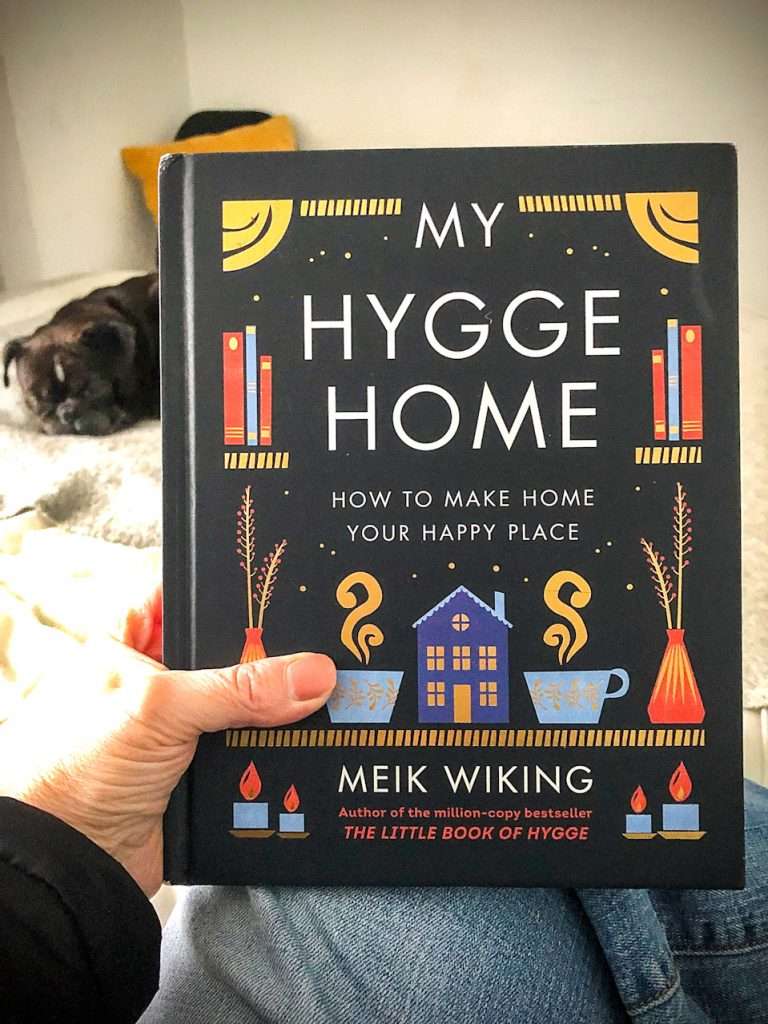
The Importance of Hygge
Hygge is all about the art of creating a nice atmosphere, being with people we love, feeling safe, shielded from the world, where one can let their guard down and just be themselves; finding comfort and connection. Hygge is also about designing your home to have a positive impact on your wellbeing and shaping your living space to make it happen.
As Wiking explains, ‘It’s difficult to overstate how important Hygge is to the Danes and the Danish culture. The Danish obsession with hygge seems so ingrained in our cultural DNA and national values that to say you don’t care about it would be as much of a social faux pas in Denmark as it would be for a British person to say ‘I don’t think we should stay calm — I think we should freak out’ or an American saying, ‘I’ve been thinking lately about this freedom thing —and I’ve come to the conclusion that it is not for me”.
Homes are hygge headquarters to the Danes. Not only is it where we relax and recharge, home is also central to our social life in Denmark.
Wiking continues, “Whereas other countries have a culture of socializing predominantly in bars, restaurants and cafes, Danes prefer hjemmehygge (home hygge). Perhaps it is because going out in Denmark is relatively expensive or because Danes are typically introverted people and feel more comfortable in their own surroundings.”
Another consideration Wiking mentioned after one difficult day during the pandemic was, as the virus imposed things we couldn’t control, his girlfriend reminded him, “we always have control over how we approach things.” Adding that, “While we may live in a turbulent world, we can still make our homes a happy place.”
As a Scandinavian extrovert turned introvert after the pandemic happened, I get that and welcome the idea of making our home more of our happy place. Just these concepts alone make total sense, which intrigued me more into diving deeper into this way of life.
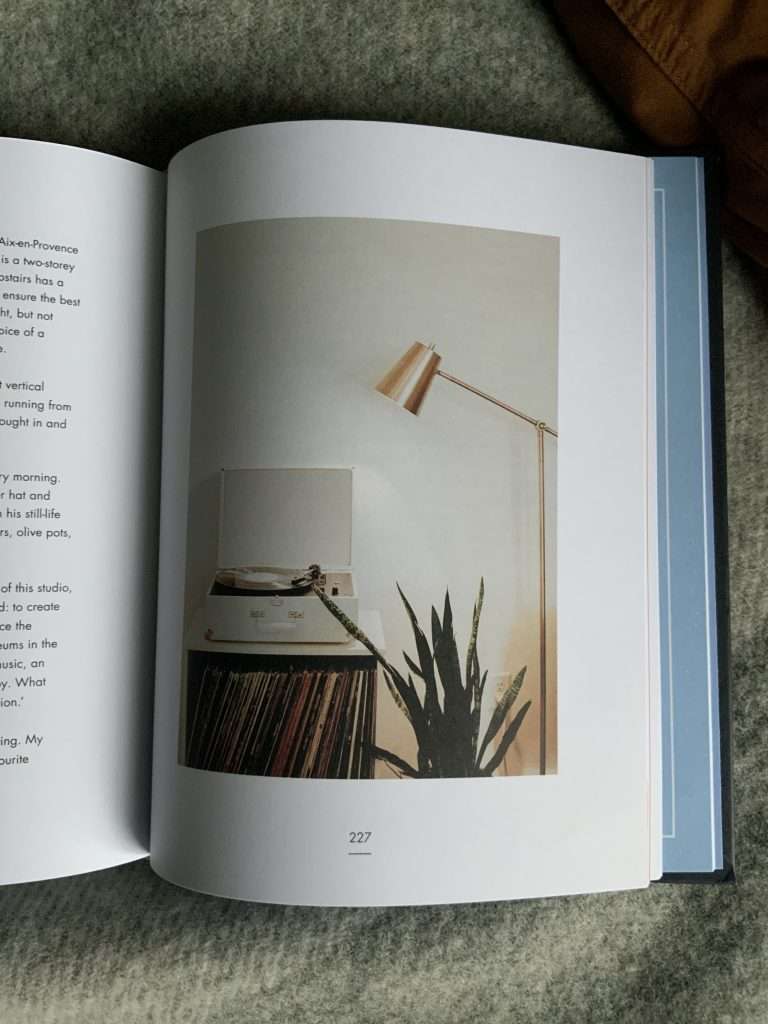
What Has the Greatest Impact On Your Happiness?
Pulling stats from the Happiness Research Institue, Wiking found some interesting information:
“73 per cent of the people who feel happy about their home, also feel happy in general but, more importantly, that 15 per cent of people’s overall happiness could be explained by their home or their satisfaction with it. Fifteen per cent might not sound like a lot, but think of how many factors have an impact on your happiness. Your relationships, health (especially mental health), your job, etc. It takes a lot to move a needle, so 15 per cent is a sizeable chunk.”
Wiking goes on to say, “Spaces and places definitely have a positive impact on our wellbeing. So to know we can improve our quality of life through changing the spaces around us, that we can design our happiness through that, and to paraphrase Winston Churchill, “we shape our homes and then they shape us.”
So how do we achieve hygge in our homes?
I’m not going to reveal all that is in the book, but there are a few key concepts that Wiking explains as a good starting point.
One doesn’t have to do a complete overall of their home interior/exterior to obtain a hygge feel (that would also just go against everything hygge is meant to be —to try to fix it all right away). But to start small, taking baby steps is a good place to start, and here are a few takeaways I think are the perfect way to begin.
The Architecture of Happiness Checklist:
Embrace the Nook
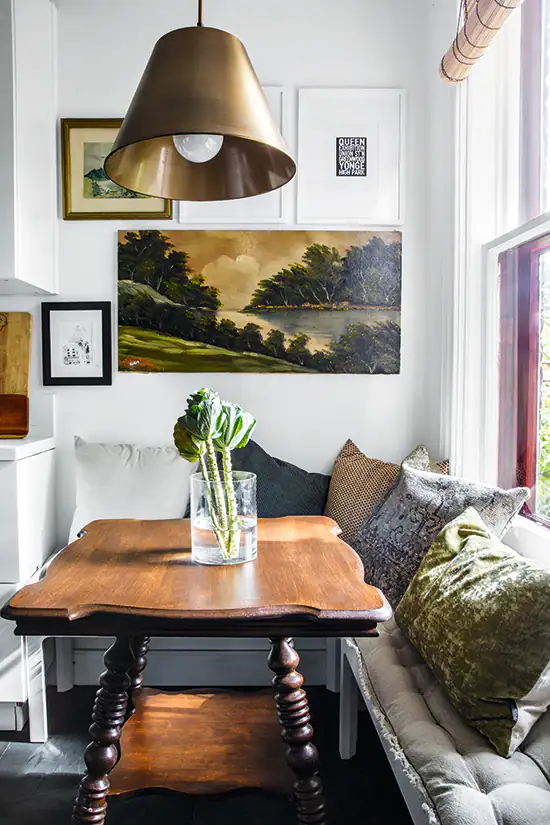
Everyone likes to feel safe. And what better way to feel cozy and safe in one’s home than to “Viking Proof a corner or nook to hang out in, so as not to worry about anyone sneaking up behind you while you’re working (not that anyone would), but it’s a human instinct to protect ourselves”, notes Wiking.
Consider Scale
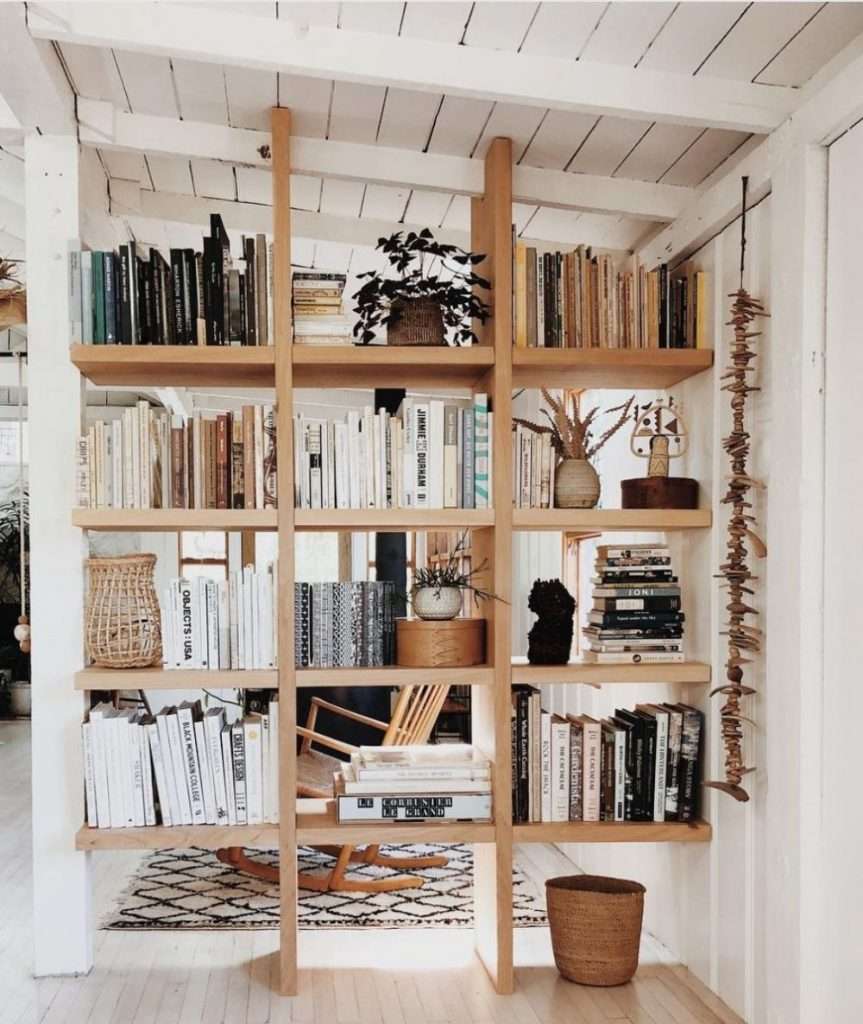
We can all learn from human scale, as Wiking states taking a cue from Danish architect, Jan Gehl, who advises cities across the world on how to create liveable spaces, “No matter how much space you have at home, give your senses things to enjoy and think about how your surroundings are constructed to support how you want to live there.” For example, “plants add life, books offer exploration.” You wouldn’t feel comfortable in a space where furniture is too small and the room feels empty, equally, if the furniture is too large for a room and it’s crowded, then things feel stifled and restricting.
Add Softness
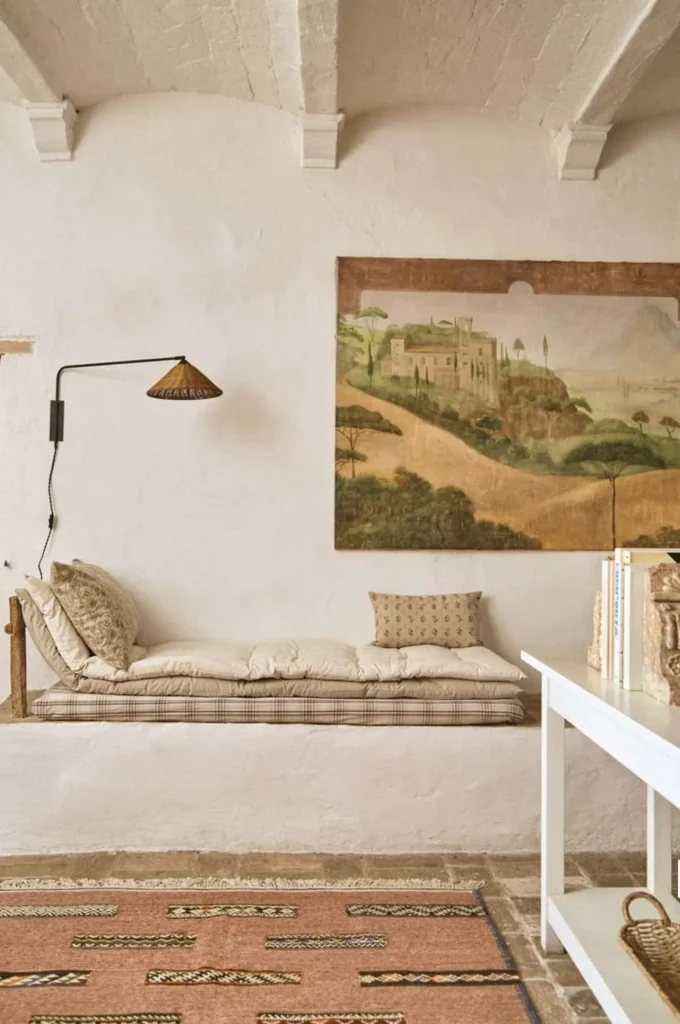
Creating a soft place to fall where one can curl up with a good book is “quality hygge hybernation”. Love this layering of mattresses (Princess and the Pea-style) we featured this past spring here on the blog for adding ultimate softness.
Keep a Stocked Pantry
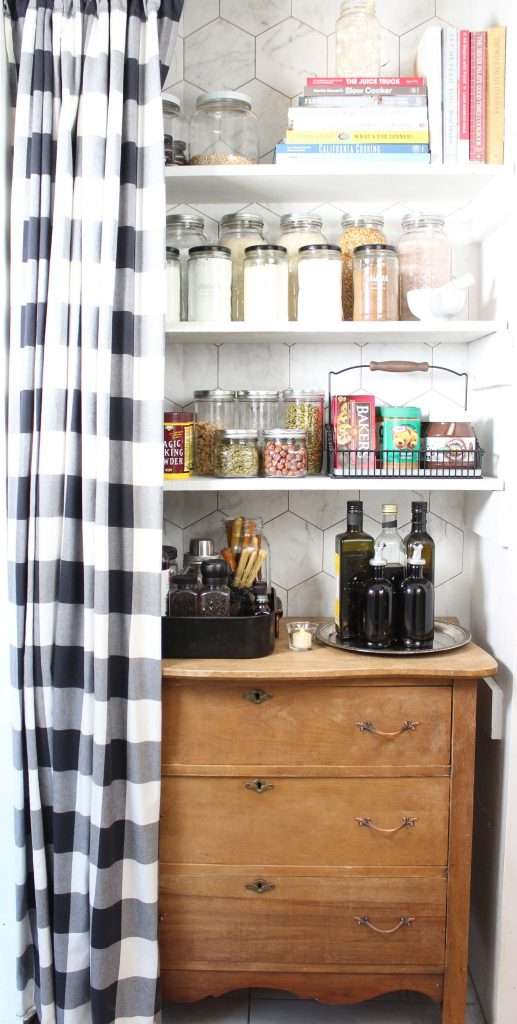
Being prepared for any type of weather or situation (especially in the winter) is comforting. This is a fail-safe way to hygge and hunker down during events beyond our control. As Wiking notes, after canning and pickling a summer’s harvest, “Making summer last until Christmas is a pretty good recipe for happiness.”
Create Space for Privacy and Socialization
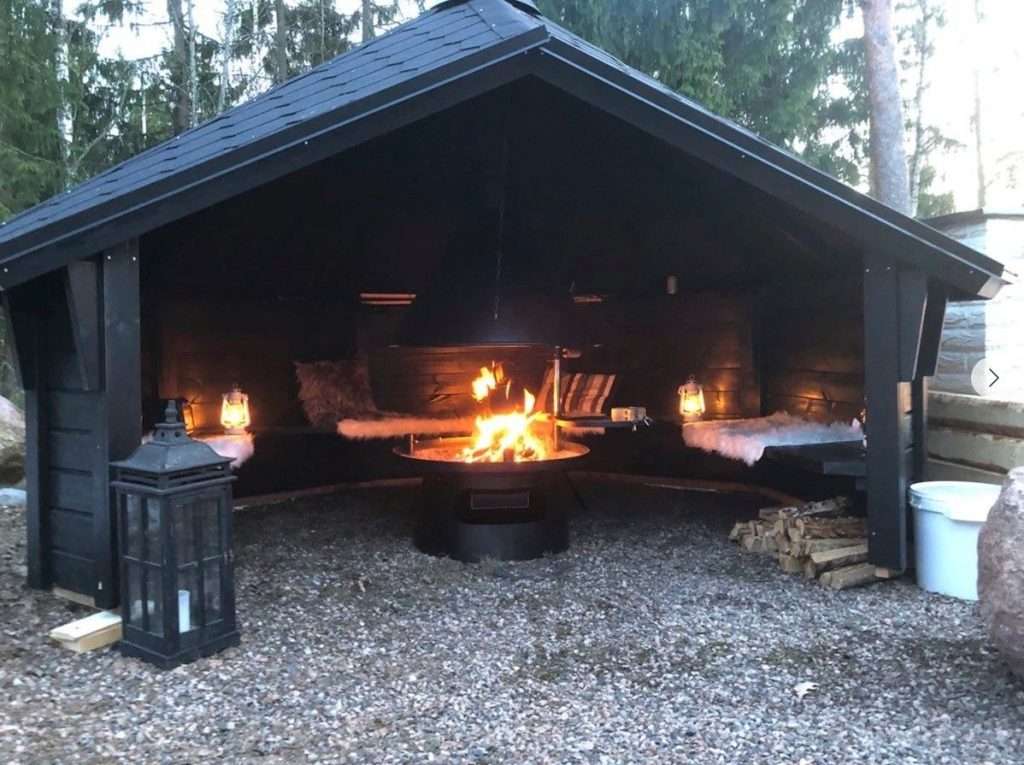
Creating space for both privacy and socialization is key for a hygge home outdoors. Places that are suited for social activities (like your front door area/entrance), and a place that is more private (like a backdoor or balcony for instance). Love these Kotalaavuts out of Finland for enjoying the outdoors hot or cold. Seems cozy.
I never realized how much in depth hygge can get, especially since I basically just touched the surface of this book.
For more inspiration and tips, check out this book (link below), a perfect companion for hitting the reset button in the New Year.




